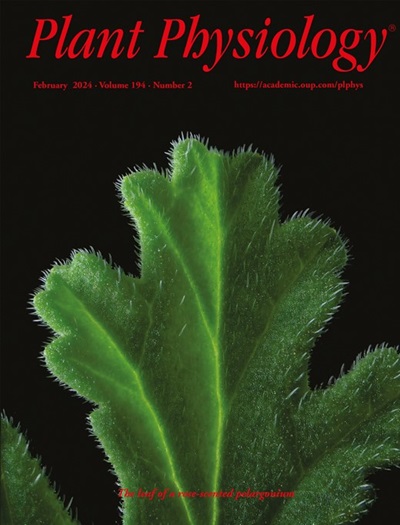An old dog with new tricks – the value of photorespiration as a central metabolic hub with implications for environmental acclimation
IF 6.5
1区 生物学
Q1 PLANT SCIENCES
引用次数: 0
Abstract
Photorespiration serves as a metabolic repair system that safeguards photosynthetic carbon fixation in photoautotrophic organisms thriving in today’s oxygen-rich atmosphere. This essential process detoxifies the inhibitory metabolite 2-phosphoglycolate (2PG), an unavoidable byproduct of ribulose-1,5-bisphosphate (RuBP) carboxylase/oxygenase (Rubisco) activity in the light. If not efficiently metabolized, 2PG impairs key enzymatic processes involved in carbon assimilation and utilization thereby inhibiting growth in oxygenic phototrophs. Decades of research have unraveled the biochemical and genetic intricacies of photorespiration, establishing it as the second-highest carbon flux in illuminated leaves. Here, we discuss recent developments that have expanded our understanding of the pathway, revealing novel metabolic players, intricate inter-organelle interactions, and new regulatory networks. Isotope labeling studies and reverse genetics have identified further interactions of the classical photorespiratory cycle with central carbon and nitrogen metabolism. In order to enhance photosynthetic efficiency, synthetic biology approaches have reengineered photorespiration, either by integrating bypass pathways or optimizing native enzymes. These interventions highlight the vast potential of optimized photorespiration to boost photosynthetic yield and enhance plant adaptation to future climates. Very recently, the importance of active photorespiration in guard cells was discovered, linking it to the regulation of stomatal metabolism and behavior. Collectively, these recent findings reinforce the immense promise of continued photorespiratory research in developing innovative strategies for improving plant yield and resilience.老狗新把戏-光呼吸的价值作为一个中央代谢枢纽与环境适应的影响
光呼吸作为一种代谢修复系统,保护在今天富氧大气中茁壮成长的光自养生物的光合碳固定。这一重要过程可以解毒抑制代谢物2-磷酸乙醇酸(2PG),这是光下核酮糖-1,5-二磷酸(RuBP)羧化酶/加氧酶(Rubisco)活性不可避免的副产物。如果不能有效代谢,2PG会损害参与碳同化和利用的关键酶促过程,从而抑制氧养生物的生长。几十年的研究已经揭示了光呼吸的生化和遗传复杂性,并将其确定为光照叶片中第二高的碳通量。在这里,我们讨论了最近的发展,扩大了我们对途径的理解,揭示了新的代谢参与者,复杂的细胞器间相互作用和新的调控网络。同位素标记研究和反向遗传学已经确定了经典光呼吸循环与中心碳氮代谢的进一步相互作用。为了提高光合效率,合成生物学方法通过整合旁路途径或优化天然酶来重新设计光呼吸。这些干预措施突出了优化光呼吸在提高光合产量和增强植物对未来气候的适应方面的巨大潜力。最近,人们发现了保护细胞中活性光呼吸的重要性,并将其与气孔代谢和行为的调节联系起来。总的来说,这些最近的发现加强了光呼吸研究在开发提高植物产量和恢复力的创新策略方面的巨大前景。
本文章由计算机程序翻译,如有差异,请以英文原文为准。
求助全文
约1分钟内获得全文
求助全文
来源期刊

Plant Physiology
生物-植物科学
CiteScore
12.20
自引率
5.40%
发文量
535
审稿时长
2.3 months
期刊介绍:
Plant Physiology® is a distinguished and highly respected journal with a rich history dating back to its establishment in 1926. It stands as a leading international publication in the field of plant biology, covering a comprehensive range of topics from the molecular and structural aspects of plant life to systems biology and ecophysiology. Recognized as the most highly cited journal in plant sciences, Plant Physiology® is a testament to its commitment to excellence and the dissemination of groundbreaking research.
As the official publication of the American Society of Plant Biologists, Plant Physiology® upholds rigorous peer-review standards, ensuring that the scientific community receives the highest quality research. The journal releases 12 issues annually, providing a steady stream of new findings and insights to its readership.
 求助内容:
求助内容: 应助结果提醒方式:
应助结果提醒方式:


